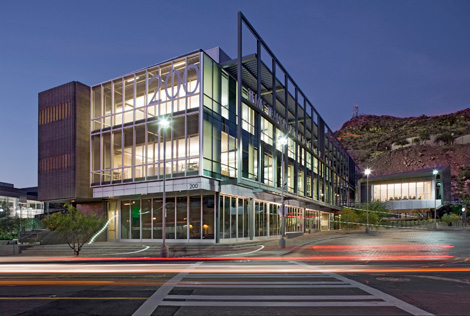
Other participants in the Transportation Center are Otak, a Portland-based firm that partnered with Architekton on the design; A DYE DESIGN, the landscape architects who made the original SITES application; the Tempe office of Adolfson & Peterson Construction, construction manager at risk; the Phoenix office of the Michael Baker Corporation, civil engineers; and the city of Tempe Transportation Division, owner and project manager. Bonnie Richardson, AIA, LEED AP, the project manager for city, will be leading the submittal process and coordinating the team’s documentation for the SITES Initiative.
“SITES highlights the potential of the landscape to do much more than merely use less of precious resources like water, energy, and time,” says Steve Windhager, director of the Sustainable Sites Initiative and of the Landscape Restoration Program at the
SITES, then, focuses on environmental factors in the same way that Leadership in Energy & Environmental Design certification, sponsored by the United States Green Building Council, focuses on structures. The USGBC, in fact, plans to incorporate a number of the credits established by the SITES program into its LEED® Green Building Rating System™. Nevertheless, SITES will be self-standing for those projects wishing to extend beyond building-centric LEED requirements as well as for those projects that do not have enough structural components for LEED certification, Windhager explains.
The
For the SITES initiative, the team is seeking credits for sustainable landscaping practices such as stormwater and graywater collection for low-water use irrigation; vegetated transit shelters; desert trees for pedestrian comfort and the reduction of heat-island effect; a sensitive site plan, respecting the sacredness of Hayden Butte to Native Americans; challenging manipulation of a transit site where visibility, not sustainability, is the primary focus; extensive daylighting and natural ventilation; a thermal-buffer green roof of desert-appropriate plants; and a water treatment system that removes minerals prior to use in the cooling tower.
“The SITES program will provide greater visibility for those elements of site design and construction that sensitively connect the community and the natural environment,” says Angela D. Dye, FASLA, LEED® AP, principal of A DYE DESIGN, a Valley landscape architect for 23 years and immediate past president of ASLA, one of the sponsoring SITES organizations. As such, she has been deeply involved with the program as well as with the
